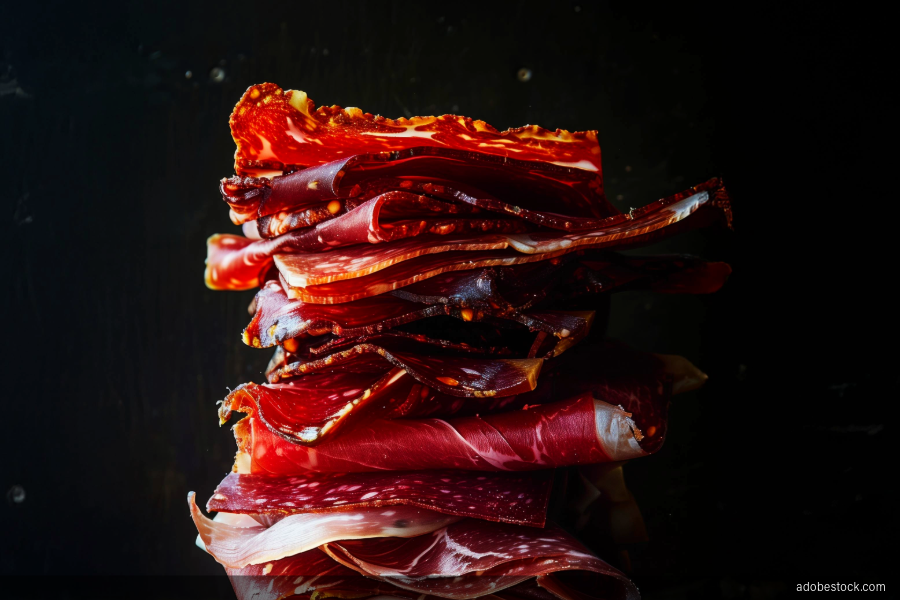Looking for the Cure? Cured Meats are the answer for your next pizza special.
Cured meats may be just the “cure” you are looking for to spice up your menu. Yes, pepperoni and bacon are pizza fan-favorite cured meats, but there are a host of flavorful salami lobbying for your attention.
Eager, culinary-curious diners are looking to your pizzeria to infuse variety and creativity with a new meaty ingredient. The annual growth rate for cured meats is 4.91 percent from 2018 to 2023, with a 7.03 percent increase in sales value over 2022, according to the U.S. Cured Meats Market Size, Growth and Forecast Analytics to 2028. The U.S. Department of Agriculture reports that the average American consumes 20-25 pounds of cured meats per year. While much of the consumption comes in the form of bacon, ham and sausage, less common cured meats also factor in.
We’re zeroing in on salami and other cured meats that have become popular in American pizzerias. This is your guide to cured meats to consider when you are planning your next pizza special.
First, not to dive too deep into the weeds, but we often interchange the terms cured meats and salami. Cured meat is the overarching term where salami resides. We typically think of deli salami as THE salami. In fact, there are hundreds of salami iterations around world with the common bond that the sausages are fermented and air-dried. Americans love our salami so much that it is celebrated as a food holiday on Sept. 7.
You will also see the term SALUMI (or SALUME).
Your Guide to Cured Meats
Prosciutto
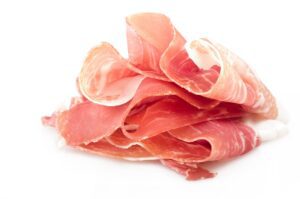
Photo by adobestock.com
The Italian ham is made from the hind legs of a pig that is salt cured, air-dried and unsmoked. It can also be designated prosciutto cotto (cooked) or prosciutto crudo (raw but still cured). Prosciutto is also named by city or regional origin, like prosciutto di Parma. Most frequently, prosciutto is used as a finishing ingredient on pizza and other dishes, as it tends to toughen up under high heat.
Soppressata
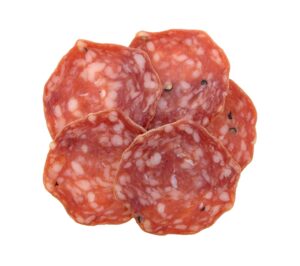
Photo by adobestock.com
The Italian salume is made from lean and fatty cuts of pork. The most well-known variations are Calabrian, which is the spicier version, and Milano, with the milder flavor profile. You may find it seasoned with dried chili peppers, black pepper, wine and other spices. When customers are looking for a pepperoni alternative, soppressata fits the bill.
Mortadella

Photo by adobestock.com
Traditional Mortadella is made with finely ground pork, high-quality pork fat (typically from the throat), peppercorns, blend of spices, myrtle berries, pistachios and stuffed into casing. Its slices have a distinctive look of pink sausage with visible peppercorn and lardon shapes throughout. Like other Italian cured meats, mortadella can be used across the menu in appetizers, sandwiches, salads and pastas.
Pancetta
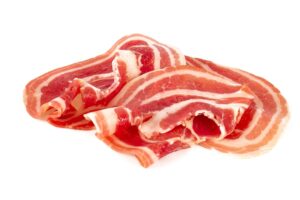
Photo by adobestock.com
Often called “Italian Bacon”, it is made from pork belly (the same cut used in bacon), salt-cured and unsmoked, unlike bacon. Sugar, black pepper and other spices are commonly used. You can find it in a roll, thinly sliced or cubed.
Country Ham

Photo by adobestock.com
The heavily salted and cured ham is most associated with the Southern U.S. Whether it is smoked varies by region. Unlike traditional ham that often is cut into thick pieces, country ham is shaved thin like prosciutto.
Speck
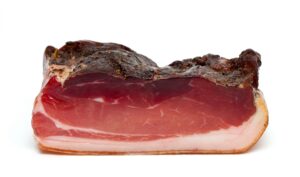
Photo by adobestock.com
This European ham is cured and lightly smoked. It is salted and seasoned with black pepper other flavor-boosting ingredients like pimento, garlic and juniper berries. It can be used as a substitute for bacon or pancetta.
Guanciale
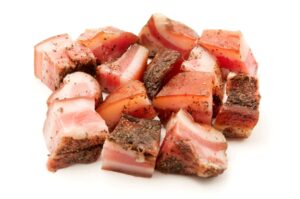
Photo by adobestock.com
The Italian salt-cured pork is made from the jowl or cheeks. Other seasonings such as pepper, chili powder and sometimes sugar are added for curing. The fat and stronger flavors rendered from the pork make it a great option for pasta dishes and complemented with milder, creamy toppings on pizza.
Bresaola
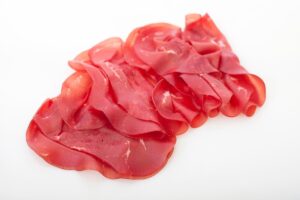
Photo by adobestock.com
This is one of the few cured meats made from beef. The beef cut from the eye of the round is lean and tender. It is salted and air-dried. The aging of the beef produces Bresaola’s trademark deep red color. The meat is sliced thin and often served as antipasto and drizzled with olive oil and lemon juice.
Lardo
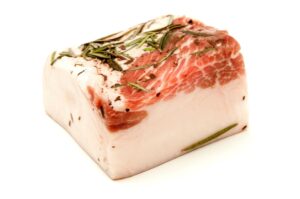
Photo by adobestock.com
The Italian cured pork fat from the rump (back fat) is flavored with spices and herbs in a salt brine for curing. The silky texture gives lardo a butter-like feel with mild pork flavor. Use it in an antipasto or as a finishing ingredient in many applications.
Chorizo

Photo by adobestock.com
The highly seasoned pork sausage is coarsely ground with chili powder, garlic and regional differing spices. Chorizo is most known for a few varieties. Portuguese and Spanish chorizo is deep red from curing and smoking with red peppers. The Mexican version tends to be spicier.
Nduja

Photo by adobestock.com
The spreadable salami hails from the Calabria region of Italy. Cuts of pork are minced with Calabrian peppers and other spices. It has a robust, spicy flavor. Nduja has several pizzeria applications, including spread on bruschetta, incorporated into pasta and dolloped on pizza. Find more nduja ideas and recipes.
These are just a few of the commonly used cured meats in pizzerias. We encourage you to explore the variety of cured meats available to test in your kitchen. Share your creations with us on social media.
Plant-based Cured “Meat” Alternatives
Vegan cured meat options have increased dramatically in the past few years. Plant-based meat alternatives cater to vegetarians, vegans and flexitarians.
Whether for health, environmental impact or other reasons, plant-based consumers have been inundated with options like never before. Plant-based sausage and pepperoni have become mainstay toppings. Other cured “meats” also are finding their way onto menus, from prosciutto and chorizo to soppressata and country ham.
What are faux meats made from? Some of the plant-based options that can mimic traditional cured meats include soy protein, Seitan, coconut, mushroom legumes, jackfruit and pea protein. You can make your own or find local purveyors or distributors to test in your pizza kitchen.
Denise Greer is Executive Editor at Pizza Today.
